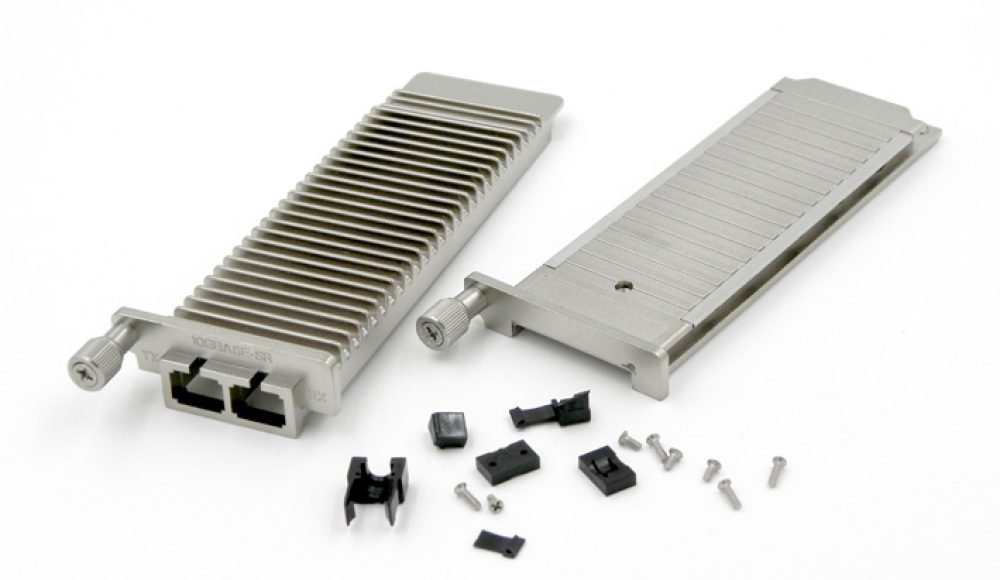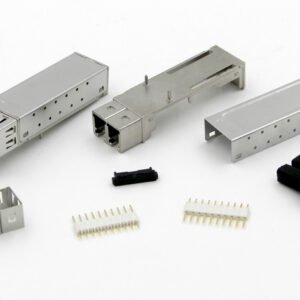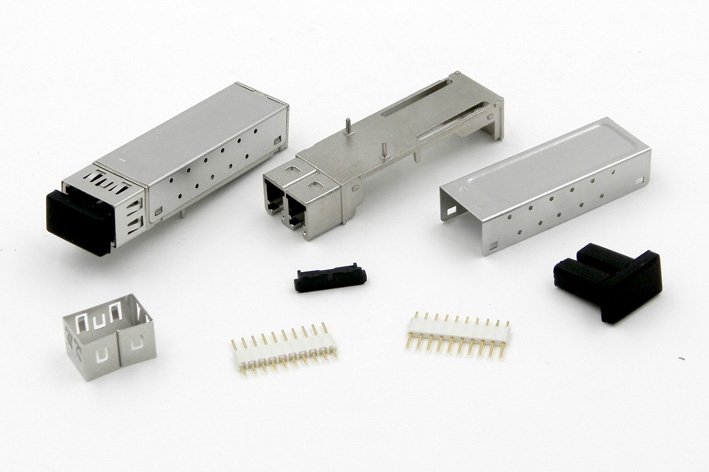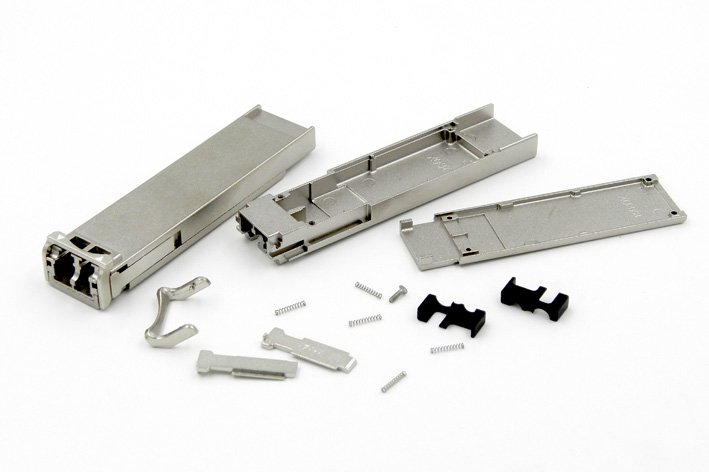Introduction
Optical transceivers are essential components in modern telecommunications, facilitating data transfer between various network devices by converting electrical signals to optical signals and vice versa. These devices play a pivotal role in high-speed communication networks, including data centers, enterprise networks, and telecommunication infrastructure. The housing of an optical transceiver, often overlooked, is a critical component that ensures its functionality, reliability, and durability.

Role
The housing of an optical transceiver is designed to encompass and protect the sensitive internal components from various environmental factors. Dust, temperature fluctuations, and physical impact are common challenges that can affect the performance and lifespan of optical transceivers. Robust housing effectively mitigates these risks, ensuring consistent performance and extended durability.
Importance
There are several types of optical transceivers, such as Small Form-factor Pluggable (SFP), Quad Small Form-factor Pluggable (QSFP), XFP, and others. Each type has unique housing specifications tailored to its application. For instance, SFP transceivers, commonly used for both telecommunications and data communications, have a smaller form factor suitable for high-density applications. On the other hand, QSFP transceivers provide high data throughput and are often used in data centers where space optimization is critical.
The design and construction of the housing vary among these different types of optical transceivers. High-quality materials, such as metal or reinforced plastic, are often used to construct the housing to enhance the transceiver’s protective capabilities. Furthermore,the casing can provide efficient heat dissipation, which is crucial for the transceiver to maintain optimal performance during use.
In summary, the casing of an optical transceiver is not just a protective shell. And it is an important component that has a significant impact on the overall performance of the device. Whether it’s protecting the transceiver from environmental threats or ensuring mechanical stability. The casing plays an indispensable role in the reliable operation of optical transceivers in various telecommunications and data communication applications.
Key Components of Optical Transceiver Housing
The optical transceiver housing is a critical aspect of ensuring the functionality and reliability of optical communication systems. One of the primary elements of this housing is the outer shell. The casing is usually made of materials such as metal or high-grade plastic. Intended to protect internal components from physical damage and environmental factors. In addition to protection, the casing also plays a crucial role in electromagnetic interference (EMI) shielding. Thus maintaining signal integrity by preventing external interference.
Introduction to main accessories and functions
Another essential component is the laser ingress and egress ports. These ports facilitate the entry and exit of optical signals, respectively. These ports are designed with precision to ensure accurate signal input and output to the transceiver without loss or distortion. The integrity of optical signals is critical, and the design of these ports directly impacts the performance and efficiency of the optical transceiver.
Thermal management elements such as heatsinks and thermal pads are integrated within the housing to manage the heat generated by the internal electronic components. Effective thermal management is vital to prevent overheating, which can lead to component failure and reduced lifespan of the transceiver. These elements ensure that heat is efficiently dissipated, maintaining optimal operating temperatures and ensuring the longevity and reliability of the device.
The locking mechanisms are equally important. These mechanisms, often in the form of latches or clips, secure the transceiver within the network device. Proper alignment and stability are essential for the transceiver’s functionality, and robust locking mechanisms ensure that the optical connections remain secure and stable during operation.
Lastly, labeling and indicators on the outer surface of the casing. Labels provide critical information regarding the transceiver’s type, specifications, and compatibility. Additionally, LEDs and other indicators offer real-time information about the transceiver’s operational status, ensuring ease of use and maintenance for network engineers and technicians.
The design and integration of these components are fundamental to the overall performance, longevity, and ease of use of optical transceivers. Ensuring that each element functions optimally contributes to the seamless operation and efficiency of advanced communication networks.
We sincerely hope to cooperate with you to build our future together!






